Every rifleman’s gun rack should hold at least one serious, high-quality .22. That’s not an exact quote, but it’s as close as possible, drawing on memory going back 50 years. Colonel Townsend Whelen wrote those words, and they have stuck with me despite the ravages of time.
Unfortunately, “serious, high-quality” .22 rifles are not easy to come by. They used to be, if memory serves, but not anymore. Today, the typical .22 rifle is too small, too light and too cheap. Over the past 75 years, the .22 rimfire has gradually evolved into a rifle for kids without much money – hence the reduced dimensions and weight, the emphasis on its ability to take abuse and still function and, above all, to be sold at a price the proverbial “farm boy” can raise from selling eggs. (One notable exception is the Ruger 77/22, but as with many things from Ruger, it is the laudable exception that proves the rule.)
This is not intended to be a stroll down memory lane, remembering things that used to be. All too often, the great things we think we remember actually never were. Not every .22 made in 1920 was a masterpiece of the gunmaker’s art. Rather, think of this as an object lesson, and to that end I present Exhibit A: The Kimber Model 82.
As .22 rifles became progressively tackier through the tasteless and misguided 1970s, cries went up in the shooting media for a real .22 rifle, for real riflemen, made “the way they used to be” – blued steel and oiled walnut with adjustable sights, a light and responsive trigger and a bore that might have been hand-cut by Harry Pope. The then-new company, Kimber of Oregon, responded in 1980 with its Model 82, a rifle that was a real gem.
Unfortunately, that was near the high-water mark of the inflationary era that started with the 1975 oil price hikes. The Model 82, with its select walnut “American classic” stock and finely blued steel, sold for upward of $400 – about the same as a Weatherby Mark V. Every one of my gun-loving friends wanted one, but not one of us bought one. The Kimber Model 82 disappeared after about 10 years.
Esta historia es de la edición Nobember - December 2018 de Rifle.
Comience su prueba gratuita de Magzter GOLD de 7 días para acceder a miles de historias premium seleccionadas y a más de 9,000 revistas y periódicos.
Ya eres suscriptor ? Conectar
Esta historia es de la edición Nobember - December 2018 de Rifle.
Comience su prueba gratuita de Magzter GOLD de 7 días para acceder a miles de historias premium seleccionadas y a más de 9,000 revistas y periódicos.
Ya eres suscriptor? Conectar
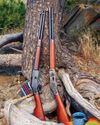
CIMARRON .32-20 Short Rifle & Carbine
In the heyday of Winchester Repeating Arms Company lever guns, it offered muskets, standard rifles, short rifles and saddle ring carbines.
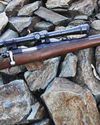
Remington's Model 722 and .222 Cartridge
It's easy enough to define what a varmint is, those pesky critters that tear up pastures, flower beds and all kinds of expensive crops people need for various reasons - most importantly, to make a living and/or something with which to feed themselves.

Coyote Bullets
What is Best for You?

Remington's 5mm Rimfire Magnum
Shooting a Classic
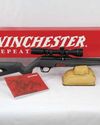
Winchester's New Wildcat
The Ultralight Rimfire Varmint Rifle

.223 Remington from .30-30 Winchester?
Multitasking for Varmints

LOADS FOR A .22 TCM
The .22 TCM first appeared commercially in 2012, chambered in a Rock Island Armory 1911-style handgun.
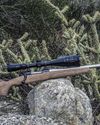
Everybody Loves Velocity
The 4,500-fps WSSM Project

A BOLT-ACTION FRANCHI 224 VALKYRIE
Testing New Loads
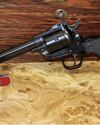
.22 Winchester Magnum Rimfire
Shooting Revolvers